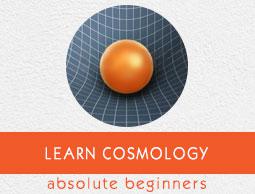CMB Temperature at Decoupling
We should first understand what characterizes the decoupling. We know that energies were much higher to such an extent that matter existed only in the form of Ionized Particles. Thus, at decoupling and recombination epochs, the energy had to drop to permit the ionization of hydrogen. An approximate calculation can be made to the estimation of temperature at the time of decoupling.
This has been performed as follows −
First, consider only the ionization of ground state hydrogen.
$$hv \approx k_BT$$
$$\therefore T \approx \frac{hv}{k_B}$$
For ionization of the ground state hydrogen, hν is 13.6 eV and kB is the Boltzmann Constant 8.61 × 10−5 eV/K that reveals the temperature to be 1.5 × 105 kelvin.
This essentially tells us that if the temperature is below 1.5 × 105 K, the neutral atoms can begin to form.
We know that the ratio of photons to baryons is about 5 × 1010. Hence even at the tail of the graph where the number of photons reduces, there will still be sufficient photons to ionize the hydrogen atoms. Moreover, recombination of electron and proton does not guarantee a ground state hydrogen atom. Excited states require lesser energy for ionization. Hence a disciplined statistical analysis should be performed case by case to obtain an accurate value. Computations set the temperature to be around 3000K.
For explanations sake, we consider the case of exciting hydrogen into the first excited state. The general expression for the ratio of the number of photons with energy more than ΔE, Nγ (> ΔE) to the total number of photons Nγ is given by −
$$\frac{N_\gamma(> \Delta E)}{N_\gamma} \propto e^{\frac{-\Delta E}{kT}}$$
For the case of exciting hydrogen to the first excited state, ΔE is 10.2 eV. Now, if we consider a highly conservative number of at least 1 photon with energy more than 10.2 for every baryon (keeping in mind that the ratio is 5 × 1010, we obtain temperature from the equation 3 as 4800 K (Inserted Nγ(> ΔE) = Np).
This is the temperature to create a population of neutral hydrogen atoms in the first excited state. The temperature to ionize this is significantly lesser. Thus, we obtain a better estimate than 1.5 × 105 K that is closer to the accepted value of 3000 K.
Redshift – Temperature Relationship
To understand the relationship between redshift and temperature, we employ the following two methods as described below.
Method 1
From Wien’s Law, we know that
$$\lambda_mT = constant$$
To relate this to the redshift, we use −
$$1+z = \frac{\lambda_0}{\lambda_e}$$
As $λ_oT_o = λ_eT(z)$, we get −
$$T(z) = T_0\frac{\lambda_0}{\lambda_e} = T_0(1+z)$$
Setting To as the current value 3K, we can get temperature values for a given redshift.
Method 2
In terms of frequency, we know −
$$v_0 = \frac{v_e}{1+z}$$
$$B_vdv = \frac{2hv^3}{c^2} \frac{dv}{e^{hv/kT}-1}$$
This tells us about the net energy of the photons for an energy interval and hν is the energy of a single photon. Hence, we can obtain the number of photons by Bνdν/hν.
If $n_{νo}$ is for present and $n_{νe}$ for emitted, we get −
$$\frac{n_{v_e}}{n_{v_0}} = (1+z)^3$$
On simplification, we get,
$$n_{v_0} =\frac{2v_c^2}{c^2}\frac{dv_c}{e^{hv/kT}-1}\frac{1}{(1+z)^3}=\frac{2v_0^2}{c^2}\frac{dv_c}{e^{hv/kT}-1}$$
This gives us the Wien’s Law again and thus it can be concluded that −
$$T(z) = T_0\frac{\lambda_0}{\lambda_e} = T_0(1+z)$$
Points to Remember
- The early universe was very hot, ∼ 3000K.
- Current measurements reveal the universe’s temperature to be close to 3K.
- The further back we go in time, the temperature increases proportionally.


